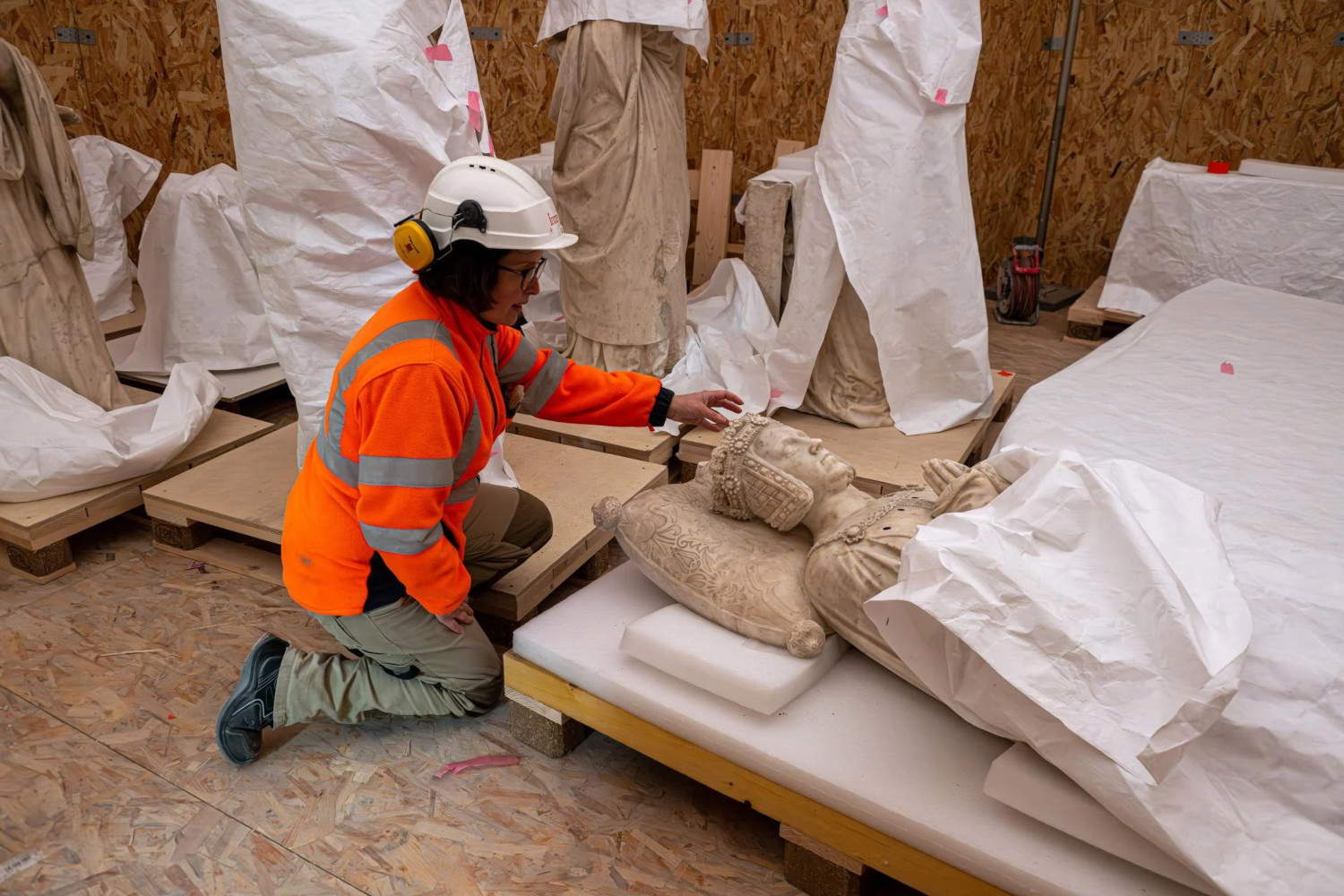Since 2023, archaeologists from Inrap (Institut national de recherches archéologiques préventives) have intervened several times in the cathedral of Saint-Pierre and Saint-Paul in Nantes, as part of the restoration of the tomb of the Duke of Brittany Francis II and Duchess Marguerite de Foix and, more generally, the cathedral’s recovery program after the July 18, 2020 fire.
Two excavations were carried out, prescribed and funded by the state (Drac des Pays de la Loire/Regional Preservation of Historic Monuments): the first around the tomb, located in the south arm of the transept, and the second in a trench prepared for the laying of a new electrical network. The investigations have uncovered remains of masonry, burials, furnishings and architectural structures, as well as reconstructing the general plan of the Romanesque cathedral, hitherto unknown. In parallel, archaeologists are also participating in the study of the tomb, which has been disassembled in its entirety for restoration, offering a new interpretation of this extraordinary Renaissance masterpiece.
To enable the restoration, the Drac (French Directorate of Cultural Heritage) completely disassembled the tomb of François II and Marguerite de Foix - parents of Anne of Brittany, duchess and queen of France - considered a jewel of the cathedral and one of the most precious examples of the French Renaissance. Archaeologists, directly involved in the operation, were able to observe and document several construction phases of the tomb.
In the spring of 2023, bones enclosed in a wooden box had been found, probably belonging to three as yet unidentified individuals. The analyses, which are still ongoing, aim to establish the identity of the deceased. Beyond that, the operation provided an opportunity to study the monument in detail. Observations will continue throughout the restoration and are already returning valuable information about the tomb’s material history, its dismantling during the Revolution, and its reassembly in the cathedral in 1817.


Inrap’s geophysical unit used the georadar technique, which allows underground structures to be detected by sending high-frequency electromagnetic pulses. As these reflect off the surfaces encountered, they produce signals that are recorded and translated into images that highlight anomalies in the subsurface, such as possible masonry. This method, complementary to manual excavation, helps guide field research.
Before the excavations, only the crypt still visible and the choir depicted in ancient engravings and photographs were with certainty attributable to the Romanesque period. The new investigations have unearthed an articulated wall complex from that period. In addition, it was possible to pinpoint the precise location of the Romanesque western portal, reconstruct its complete plan, and understand the proportions of a cathedral that was never completed.
Excavations in the south transept and in the trench dug for the power grid have returned a wide variety of finds: architectural fragments, ceramics, metal and stone objects, coins, terracotta tiles, and the remains of painted wall decorations. To these were added four isolated graves and three burial niches containing numerous bones.
Through anthropological and documentary investigations, it will be possible to understand the status of the deceased (whether lay or ecclesiastical, high-ranking or canonical), analyze the health status of the buried population, and reconstruct the organization of the funerary space. Finally, the study of archival sources will help trace the history and architectural evolution of the Romanesque cathedral.


 |
| Nantes Cathedral reveals interesting discoveries about ancient structure and ducal tomb |
Warning: the translation into English of the original Italian article was created using automatic tools. We undertake to review all articles, but we do not guarantee the total absence of inaccuracies in the translation due to the program. You can find the original by clicking on the ITA button. If you find any mistake,please contact us.